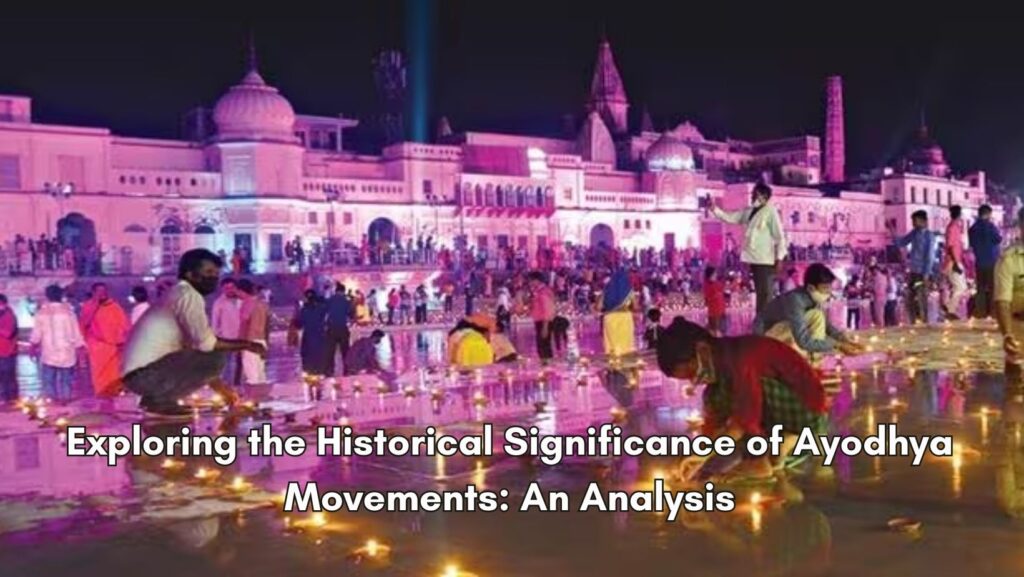The Ayodhya Movements have gained attention in recent years, prompting discussions about their historical significance and potential implications. This article aims to provide an overview of these movements while refraining from attributing any AI-generated opinions or biases to the subject matter. The analysis presented here is based solely on historical events and scholarly research.
Historical Context
The Ayodhya Initiatives encompass an array of occurrences and undertakings associated with the contentious location situated in Ayodhya, Uttar Pradesh, India. Central to these initiatives is the Babri Masjid-Ram Janmabhoomi precinct, a place holding religious importance for adherents of both the Hindu and Muslim faiths. The source of controversy emanates from contrasting viewpoints concerning the site’s genesis.
Read more – Ayodhya Reclamation: Tracing the Historical Journey and Cultural Significance
Key Events
Several key events have shaped the Ayodhya Movements. One notable incident was the demolition of the Babri Masjid in 1992. This event led to widespread communal tensions and sparked debates on the preservation of historical and religious sites.
Implications and Controversies
The Ayodhya Movements have had far-reaching implications on various fronts. Socially, the movements have raised questions about communal harmony and religious coexistence. Politically, the issue has been manipulated for electoral gains, leading to polarization within the society.
Legal battles have also been a prominent aspect of the Ayodhya Movements. The case surrounding the ownership of the disputed site was presented in court, ultimately leading to a Supreme Court judgment in 2019. The ruling allowed for the construction of a Hindu temple at the site while also granting an alternative land for the construction of a mosque.
Read more – Reviving Traditions: Ayodhya Cultural Renaissance Initiatives
Historical Significance
The Ayodhya Movements reflect the complexities of Indian society, where religious sentiments are deeply intertwined with cultural and historical identities. The actions underscore the complexities of harmonizing contrasting accounts and viewpoints within the structure of a multifaceted country.
Read more – Unveiling the Mysteries: Embarking on a Religious Tour Around the World
Conclusion
Concluding, the Ayodhya Movements have etched an enduring imprint on the tapestry of Indian history, societal norms, and political landscape. The disputes and deliberations encircling the Babri Masjid-Ram Janmabhoomi locale have illuminated the nuanced interplay among faith, historical narratives, and the mechanisms of governance. This article refrains from expressing opinions or biases and aims to provide a neutral overview of the historical significance and potential implications of the Ayodhya Movements.
